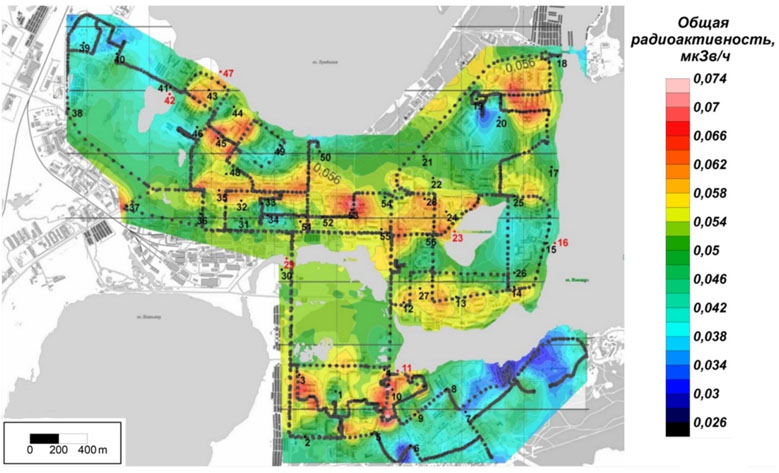Spatial distribution of 137Cs, 40K, 226Ra, 232Th in soils of Monchegorsk city (Murmansk region)
DOI:
https://doi.org/10.31251/pos.v7i2.264Keywords:
specific activity; urban soils; 137Cs; 232Th; 226Ra; 40K; Monchegorsk; Murmansk region.Abstract
The purpose of the study was to establish the patterns of spatial distribution of radioactivity of technogenic 137Cs and natural radionuclides 232Th, 226Ra, 40K in urban soils of Monchegorsk.
Location and time of the study. Soil samples, were collected in summer 2018 in the Monchegorsk city, Murmansk region, Russia. To study the specific activity of radiocesium and natural radionuclides, soil samples were taken from topsoil (0-5 cm) at 82 sites, including 68 sites within the city territory (urban soils) and 14 sites beyond the city limits in the subtorch areas strongly affected by the Severonickel factory. Similar studies of urban soils in Monchegorsk had not been carried out previously.
Methods. During expeditionary work and laboratory research, soil, radiological, and mathematical and statistical methods were used. When carrying out gamma spectrometric measurements, radionuclides 137Cs, 226Ra, 232Th and 40K were determined on a low-background semiconductor gamma spectrometer ORTEC (USA) based on a high-purity coaxial germanium detector GEM10P4–70 (HPGe) with a SBS-75 pulse signal processor and Gamma-software. The resolution of the gamma spectrometer along the 1.33 MeV line (60Co) was 1.75 keV, and the relative efficiency was 15%. Calibration and quality control of gamma spectrometric measurements was carried out using volumetric activity measurements with 1-L Marinelli vessels of different densities (RITVERZ, Russia-Germany).
Main results. The values of specific activity of radionuclides in soil samples were as following: in the technogenic 137Cs up to 31.3 Bq/kg and in the subtorch soils up to 63.4 Bq/kg. Specific activity of natural radionuclides in urban soils reached to 14.2 Bq/kg for 226Ra, whereas in the subtorch soils it reached 21.6 Bq/kg. The specific activity of 232Th in urban soils reached 18.3 Bq/kg, with 17 Bq/kg registered for the subtorch soils. As for 40K, its specific activity reached 498 Bq/kg in the urban soils and 317 Bq/kg.
Conclusion. The gamma survey of the Monchegorsk territory did not reveal any anomaly in radiation. The dose rate of gamma radiation in the city does not exceed 0.074 μSv/hour, which is less than the values elsewhere in Russia, ranging from 0.04 to 0.20 μSv/hour. The obtained data about specific activity of technogenic 137Cs and natural radionuclides 232Th, 226Ra, 40K in the Monchegorsk soils are typical for the Murmansk region.
Downloads

Downloads
Published
How to Cite
Issue
Section
License
Copyright (c) 2024 The Journal of Soils and Environment

This work is licensed under a Creative Commons Attribution 4.0 International License.






